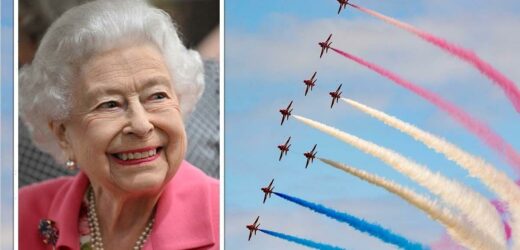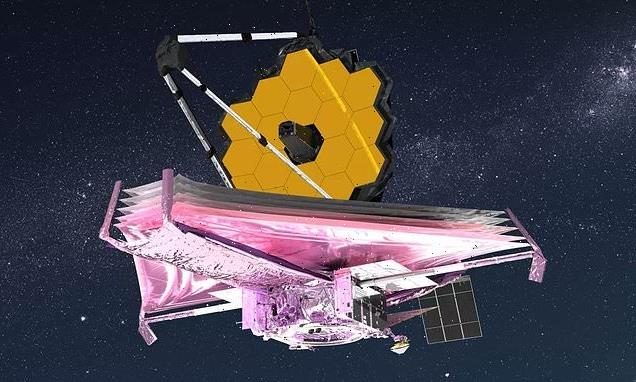Platinum Jubilee: Ministry of Defence share simulation of flypast
We use your sign-up to provide content in ways you’ve consented to and to improve our understanding of you. This may include adverts from us and 3rd parties based on our understanding. You can unsubscribe at any time. More info
The Red Arrows — officially the Royal Air Force Aerobatics Team, but also known as “the Reds” — was formed in 1964 and has been performing stunning aerial displays since 1965. Presently based at RAF Scampton in Lincolnshire, the Red Arrows have flown nearly 5,000 individual display flights in 57 different countries worldwide. While they fly in formations of nine, “the Reds” actually comprises eleven ace pilots, each on a three-year tour of duty, ably supported by “the Blues”, an 85-strong team of engineers.
The Red Arrows have flown two different aircraft over the years, having begun with seven Folland Gnat T1 jet trainers.
These swept-wing subsonic fighter craft were inherited from the Reds’ predecessors, the RAF Yellowjacks display team, and were flown until late 1979.
Beginning in 1980, the aerobatics team switched to Hawk T1A jets, specially modified so the underbody gun pod is replaced by a special fairing that carries diesel fuel and dye for the iconic red, white and blue smoke systems.
Each of the jets are 39 feet long, have a wingspan of 30.8 feet, and sport a twin cockpit specifically designed for advanced pilot training.
Powered by a single Rolls-Royce Adour turbofan engine, the Hawk was designed for manoeuvrability and can reach 645 miles per hour during level flight — and even exceed the speed of sound during a dive.
The engine controls of the Hawks used by the RAF have also been modified to give them a more immediate throttle response to that of the standard Hawk configuration.


During this long weekend’s festivities, the Red Arrows will be bringing up the rear of today’s Queen’s Platinum Jubilee flypast.
The six minute display is — weather permitting — scheduled to fly down the length of the Mall and over Buckingham Palace beginning at 1.00pm, following the ceremony of Trooping the Colour.
Other aircraft expected to make up the celebratory flypast today include Wildcat helicopters, a C-17 Globemaster heavy transport craft, and Spitfires and Hurricanes from the Battle of Britain memorial flight.
These craft — along with the Red Arrows’ Hawks — will be taking off from Royal Navy, British Army and Royal Air Force stations across the UK to enter holding patterns over the south-east of England before coming together into formation for the flypast.


Squadron Leader Tom Bould flies Red 1 — the lead aircraft of the Red Arrows formation.
Sqn Ldr Bould told Express.co.uk: “It is with great pride and privilege the Red Arrows have the opportunity to join with countless individuals and communities across the United Kingdom and further afield to celebrate Her Majesty’s Platinum Jubilee.”
He added: “We’re always honoured and thrilled to perform a flypast over the capital
“I hope people share this excitement, cheer and wave when they see the Red Arrows’ trademark patriotic red, white and blue trails marking this important year and the very best of British.”
DON’T MISS:
Archaeology breakthrough as 3,400-year old lost city unveiled [REPORT]
Sturgeon facing humiliation over anti-Trident pledge [ANALYSIS]
Monkeypox outbreak: Russia launches horror disinformation campaign [INSIGHT]

The Red Arrows, the Ministry of Defence (MoD) said, are “one of the world’s premier aerobatic display teams”.
The MoD added: “Representing the speed, agility, and precision of the Royal Air force, the team is the public face of the service.
“They assist in recruiting to the Armed Forces, act as ambassadors for the United Kingdom at home and overseas and promote the best of British.
“Flying distinctive Hawk fast jets, the team is made up of pilots, engineers, and essential support staff with frontline operational experience.
“Together, they demonstrate the excellence and capabilities of the Royal Air Force and the service’s skilled, talented people.”
Source: Read Full Article


